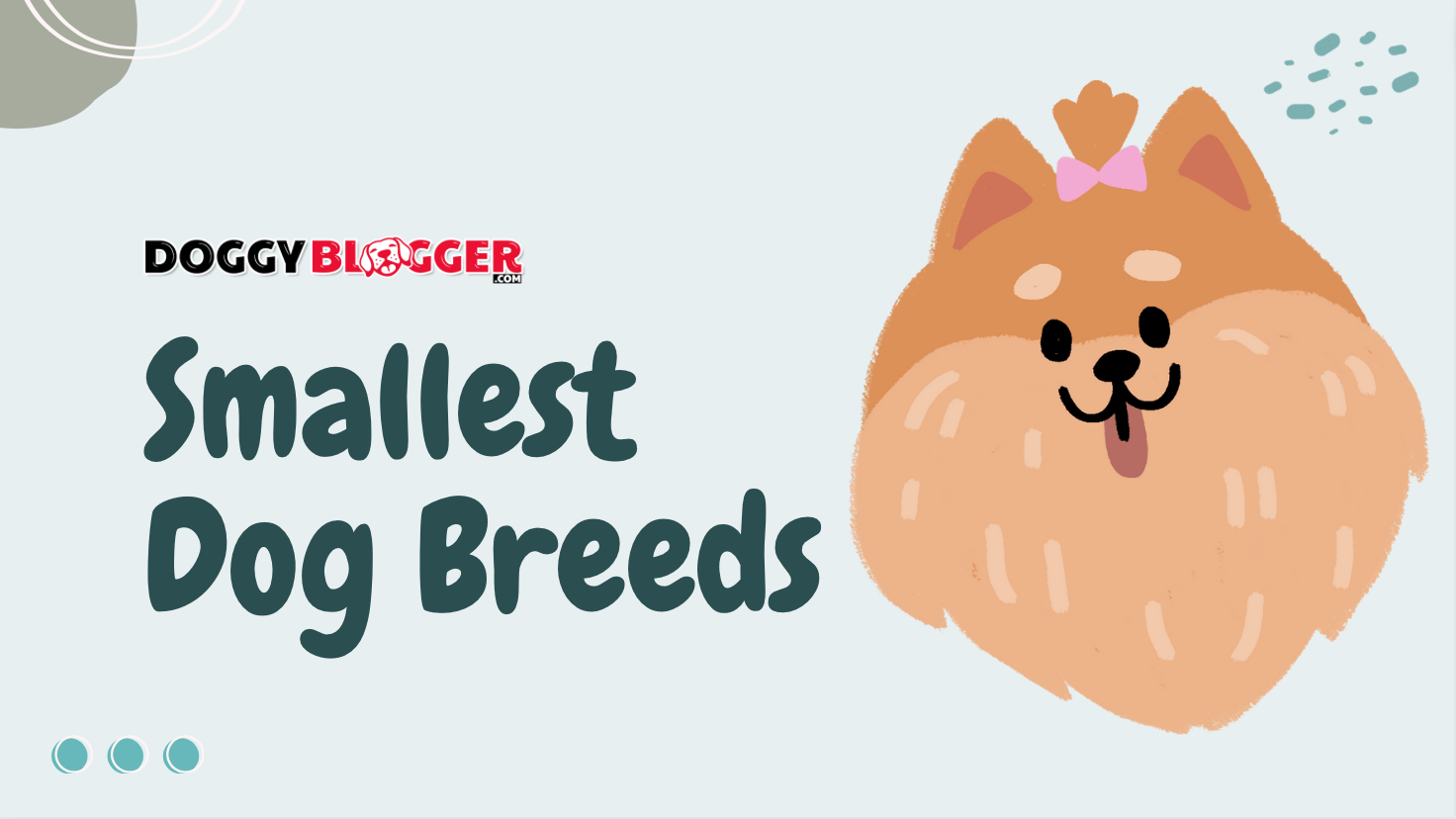Small breeds of dogs are the adorable, tiny and lovable family members that exist in our world today. They make great companions for those who prefer smaller-sized dogs, as they often require less living space and less exercise. Small dog breeds come in all shapes, sizes, colors, and personalities—from the energetic Chihuahua to the laid back Shih Tzu.
Small breed dogs tend to have longer lifespans compared to large breed dogs due to their size. However, their health should still be monitored closely with regular vet visits. They are also known for being loyal and devoted companions, often forming strong bonds with their owners.
The small size also makes them easier to manage in terms of grooming needs as well as exercising them indoors or in a small yard. They can be great lapdogs but they still need plenty of attention and affection from their owners.
Our Top 4 Smallest Dog Breeds
| Family Closeness | Children-friendly | Social | Dogginess Rating | |
| Toy Poodle | The Toy Poodle is an affectionate and devoted breed of dog that loves to be close to its family. They are known for their intelligence and loyalty, making them a popular choice for those looking for a companion animal. Toy Poodles can form strong bonds with their owners and will often follow them around the house. | A wonderful companion for children. This breed is smart and loves to be around people, making it an ideal pet for children. Its friendly nature makes it great for interacting with kids, and its small size means it can easily be handled by smaller hands. | Toy Poodles are usually friendly and social dogs, making them great companions for other dogs. They often get along well with other canines of all sizes, including larger breeds such as Labradors and German Shepherds. Toy Poodles also do well with cats and other small animals in the home. | 5/5 |
| Chihuahua | The Chihuahua is known to be an incredibly loyal and devoted companion. They are highly affectionate, sensitive and protective of their family, making them great additions to households with children. With proper socialization, the Chihuahua can become very close with family members and form strong bonds. | Great option for families with children. They are small, energetic, and full of life, making them perfect companions for young kids. Chihuahuas are known to be loyal and affectionate towards their owners, so they can form strong bonds with their human family members. | Friendly and outgoing breed, but like any other dog, it needs proper socialization. With other dogs, the Chihuahua often gets along well as long as they are properly introduced to one another at an early age. They may display some territorial behavior if not accustomed to other animals, but this is very rare if the dog has been trained properly. | 3.5/5 |
| Pomeranian | Pomeranians are alert, clever, easily trainable, and cheerful pets for families with kids old enough to understand the difference between a toy dog and a toy. Poms are happy in both the city and the suburbs since they can exercise through indoor play and quick walks despite their high level of activity. | Although they usually get along well with kids, parents should remind kids that these are small dogs and not as strong as larger breeds. | If your Pom has received proper socialization, he will probably get along with dogs of all breeds. Even a Pomeranian and German Shepherd can get along nicely in certain situations. | 5/5 |
| Maltese | Gentle, affectionate, intelligent, responsive and trusting. A good family dog, Maltese are lively, playful, vigorous, and they generally enjoy learning tricks. | Breed that loves children and makes an excellent family pet. They are loyal, gentle, and incredibly smart which makes them great companions for kids of all ages. Additionally, their small size and even temperament make them easy to train, making them a perfect pet for young children. | Can be loud and might be barking at other dogs and strangers, but that usually causes them to want to socialize and play—they often use barking as a way for looking for attention and game. | 5/5 |
1. Toy Poodle
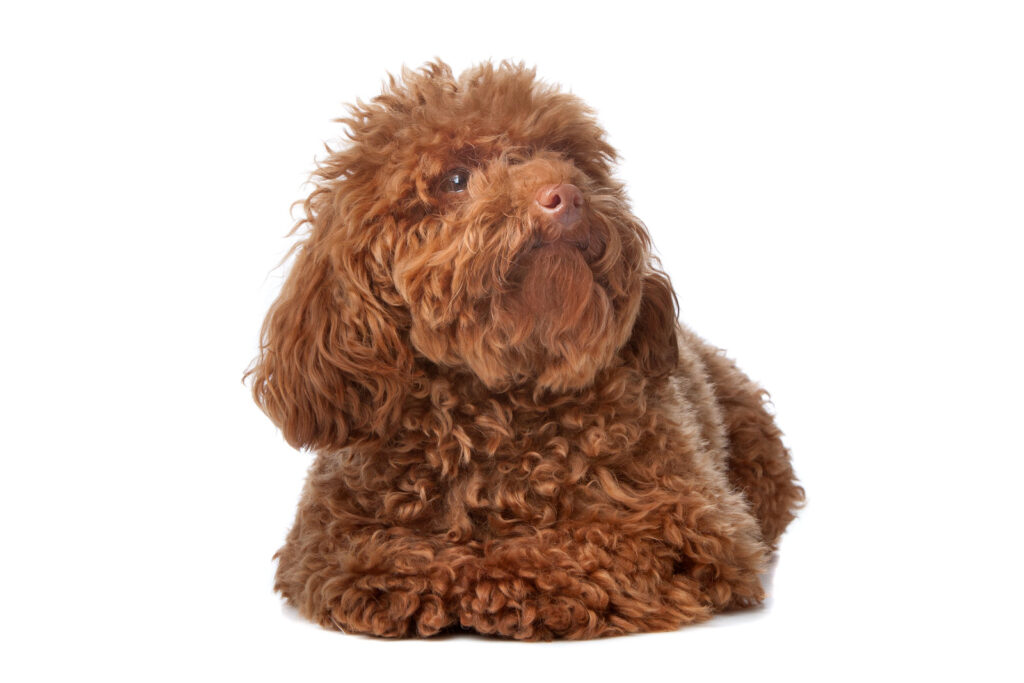
Toy Poodle dogs are one of the most popular breeds of small dog throughout the world. They are a member of the toy group and have been bred as companion dogs for centuries. Toy Poodles have long, curly coats that come in many different colors, including white, black, apricot, red, and silver.
They are intelligent and affectionate pets that do well in families with children. Toy Poodles need regular grooming to keep their coats looking great and can live up to 13–15 and some even 18 years with proper care. They enjoy going on walks and playing games such as fetch but also love cuddling on the couch with their owners.
With plenty of exercise and attention, Toy Poodles make great companions for people who have space limitations or those who just want a small companion to join them on their adventures.
The Toy Poodle is a great family dog breed. Its intelligence and loyalty make it an ideal companion pet. They are small in size, but they are gentle and loving with their families. They are also very affectionate, so they will be sure to show you lots of love!
Toy Poodles are usually friendly, outgoing and sociable with other dogs and strangers. They typically get along well with other dogs when properly socialized.
Toy Poodles can also be quite protective of their family and may bark at strangers but will usually warm up quickly once they realize the stranger is not a threat.
The Toy Poodle dog breed is one of the most active and energetic breeds around. They require plenty of exercise, both mental and physical, to stay healthy and happy.
Toy Poodles love to play fetch, go on walks, and participate in agility competitions.
This breed has a strong sense of loyalty to its community. Some dogs may be timid with strangers, while others may bark excessively.
It is a delight to train the vivacious and vivacious Toy Poodle since it is among the smartest breeds and is eager to please, attentive, alert, sensitive, playful, and lively.
Things To Keep In Mind
Health
The Toy Poodle is a small, intelligent and active breed of dog. They are considered to be very healthy overall, with a life expectancy of around 12-15 years. Toy Poodles require regular exercise and mental stimulation to stay healthy and happy.
However, like any other breed, Toy Poodles can be prone to certain genetic health issues such as hip dysplasia and eye disorders. To reduce the chances of your pup developing these conditions it’s important to purchase them from a reputable breeder who ensures that their dogs have been screened for hereditary issues.
Additionally, regular vet checkups should be arranged in order to ensure your pup stays in optimal health throughout their life.
Grooming
Poodles have incredibly soft, wavy coats when they are still puppies. As a result, you must brush your poodle puppy daily or at the very least, twice weekly. Your puppy’s coat won’t get matted if you do this. Because adult poodles typically have curlier coats that don’t mat as quickly, you can reduce the amount of brushing as your poodle ages. Brushing, however, is crucial throughout the puppy stage.
Poodles don’t have fur like many other dog breeds do; they have hair. They become hypoallergenic and stop shedding as a result. However, it also necessitates far more frequent grooming on the part of their owners than they would if they had a dog with fur.
A poodle’s hair will continue to grow and grow and grow some more if it isn’t groomed frequently enough, eventually matting. In order to prevent matting from damaging their pets, Poodle owners must maintain their dogs’ short, curly coats.
Exercise
Depending on whether they are a Toy, Miniature, or Standard Poodle, a Poodle needs a daily walk of 20 to 60 minutes at a leisurely but brisk pace. Given their high level of endurance, Poodles can travel farther if you want them to.
You can determine how far your Poodle needs to go by watching them. They probably have had enough if they start to pant excessively, start to lag behind, or halt and lay down. The walk should presumably come to an end. You have the option to move a little bit farther if they are happily trotting along.
This can involve a leash-free exploration session in the neighborhood park or a short walk around the block. The daily stroll is a terrific opportunity for exercise, as well as for strengthening your relationship with each other and letting off some steam. Through the sights, sounds, and smells they encounter as well as social interaction with other dogs you meet along the road, it also stimulates the mind.
An occasional lengthy walk on the weekend is preferable to doing nothing all week. You can take your Poodle on two shorter walks if you’d like.
Training
Training a Toy Poodle dog breed is relatively easy. These dogs are known for their intelligence, so they learn quickly and respond well to positive reinforcement. As with any breed, it’s important to start training early, as puppies tend to pick up habits more quickly. Basic obedience commands should be the focus of your training efforts.
Teaching your Toy Poodle to sit, stay, come, heel, and lay down can be done with patience and consistent practice. In addition to basic commands, you may want to also focus on socialization skills. Taking your toy poodle on walks in the park or around the neighborhood can help them get used to other people and animals.
It’s also important to continue with positive reinforcement when your pup does something right. Praise, treats or toys can all be effective motivators for this breed of dog. With the right training tools and techniques, you should have no problem teaching your Toy Poodle all the necessary behaviors needed for a well-behaved dog.
Nutrition
Poodles are one of the more well-liked breeds in the world and are renowned for their intelligence, love of family, and curly, low-shedding coat.
Poodles need a minimum of 18% protein as adults and 22% protein during growth periods. Adult poodles only need 5% fat, while puppies need 8%. Another set of necessities for survival includes water, carbs, vitamins, and minerals.
It is crucial for your Poodle to have the proper nourishment in order to maintain strong, healthy, and happy body functions.
The MSD Vet Manual details all the vitamins and minerals that a Poodle’s diet needs in its publication on dog nutritional requirements.
2. Chihuahua
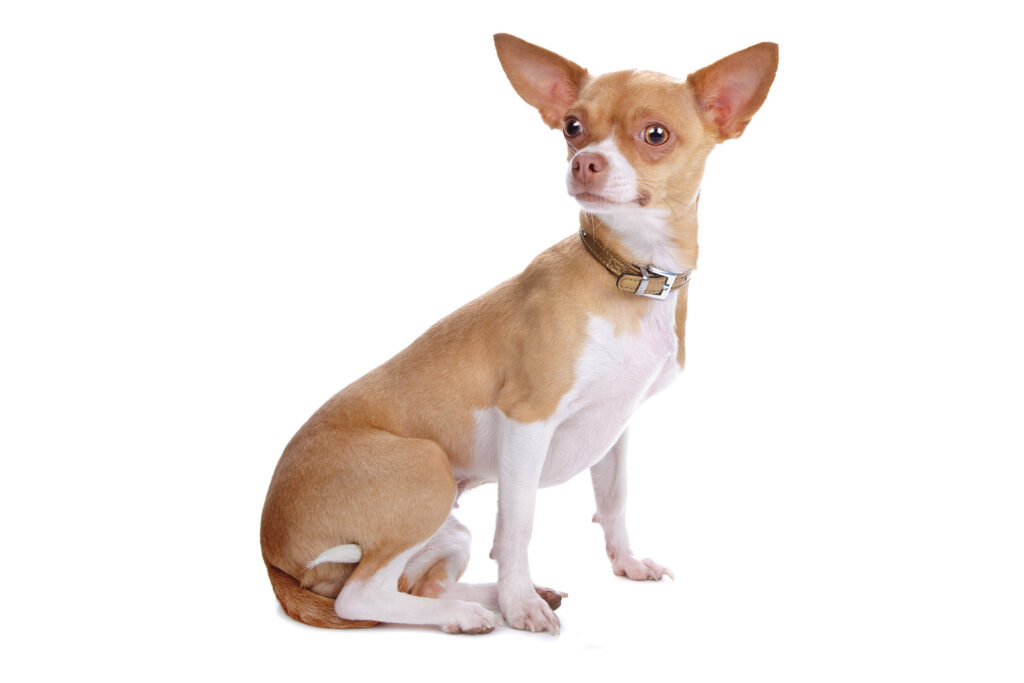
The Chihuahua is a small breed of dog originating from Mexico. It is the smallest breed of dog in the world, and typically weighs no more than six pounds. Chihuahuas come in a variety of colors, including white, black, brown, tan, cream, and even blue. They have large eyes and ears that stand out prominently on their heads.
Chihuahuas have feisty personalities and can be quite protective of their owners. They are loyal and loving companions that make great family pets.
They do well in both urban and rural settings as long as they get plenty of exercise and attention. The Chihuahua’s life expectancy is around 14 years with proper care. With proper socialization, these little dogs can make wonderful additions to any family!
The Chihuahua dog breed is a great choice for families. They are loyal and loving companions, and they will always make sure to give you lots of love and affection.
The Chihuahua is a small breed, so they don’t need much exercise or space to roam around, which makes them perfect for small spaces and apartment life.
Chihuahuas are generally friendly towards other dogs and strangers, though they may be wary of unfamiliar people or animals. They are usually quite social and outgoing when around their family, but can become possessive and territorial when it comes to strangers.
However, with proper introductions and socialization, Chihuahuas can learn whatever you want to teach them.
The Chihuahua is a small, active dog breed which is known for its lively personality and playful nature. They are naturally curious and enjoy exploring their surroundings. While they are generally not suitable for very long walks, they still need plenty of exercise to stay healthy.
Personality: Chihuahuas are loyal and devoted companions. They form strong, loving bonds with their owners and can be quite protective of them.
Chihuahuas are energetic, playful, and alert little dogs that love to explore. They’re affectionate, but also independent and can make great watchdogs.
Chihuahuas are loyal and devoted companions. They form strong, loving bonds with their owners and can be quite protective of them.
Chihuahuas are energetic, playful, and alert little dogs that love to explore. They’re affectionate, but also independent and can make great watchdogs.
Things To Keep In Mind
Health
The Chihuahua is a small dog breed that originates from Mexico. They are known for their lively, energetic personalities and their loyalty.
Generally, the Chihuahua has good health and can live up to 18 years. However, the breed is prone to some health issues such as hypoglycemia (low blood sugar levels), tracheal collapse, and luxating patellas (dislocated kneecaps).
Grooming
The Chihuahua does need to be bathed and brushed frequently. Depending on lifestyle and activity level, this self-assured tiny dog can go from a weekly bath to no more than every six weeks.
The ideal location is in the middle. A regimen for bathing and brushing should be created to make it easier to maintain good skin and fur.
A Chihuahua’s skin should be shiny, silky, and lustrous, and its coat should be glossy, soft, and lively. You may get the finest results by taking the best possible care of your pet’s skin and coat as well as choosing your products wisel
Exercise
Exercise is a key factor for the health and wellbeing of all dog breeds, including Chihuahuas. These pint-sized pups have a lot of energy and need regular mental and physical stimulation to stay happy and healthy. A daily walk or two is recommended for adults, while puppies should get several shorter outings each day.
Playtime with toys or other dogs is important, too, as this helps provide both mental and physical exercise that will help keep your pup in shape. If you’re unable to provide long walks, try setting up an obstacle course in your yard or living room so your Chihuahua can burn off some energy indoors.
Training
Training a Chihuahua dog breed can be a rewarding experience. As with any breed, the earlier you start training your Chihuahua the better. Basic obedience commands such as sit, stay and come are important to teach your Chihuahua.
Socialization is also an important part of training as it helps to ensure that your Chihuahua will interact safely and happily with other dogs and people.
Crate training is also beneficial for housebreaking and providing a safe space for your Chihuahua when needed. Positive reinforcement and consistency are key when training a Chihuahua.
Nutrition
Proper nutrition is essential for all dogs, but particularly for Chihuahuas due to their small size and delicate health. It is important to provide them with high-quality food that contains natural ingredients and limited fillers.
Ideally, the diet should include a balance of proteins, carbohydrates, and fats from sources such as fish, chicken, turkey, lamb, eggs, whole grains, fruits and vegetables.
Supplements may be necessary if your Chihuahua is not getting enough nutrients from its regular diet. It is also important to make sure they are getting the right amount of vitamins and minerals by providing them with treats that are specifically designed for Chihuahuas or by adding supplements like glucosamine.
3. Pomeranian
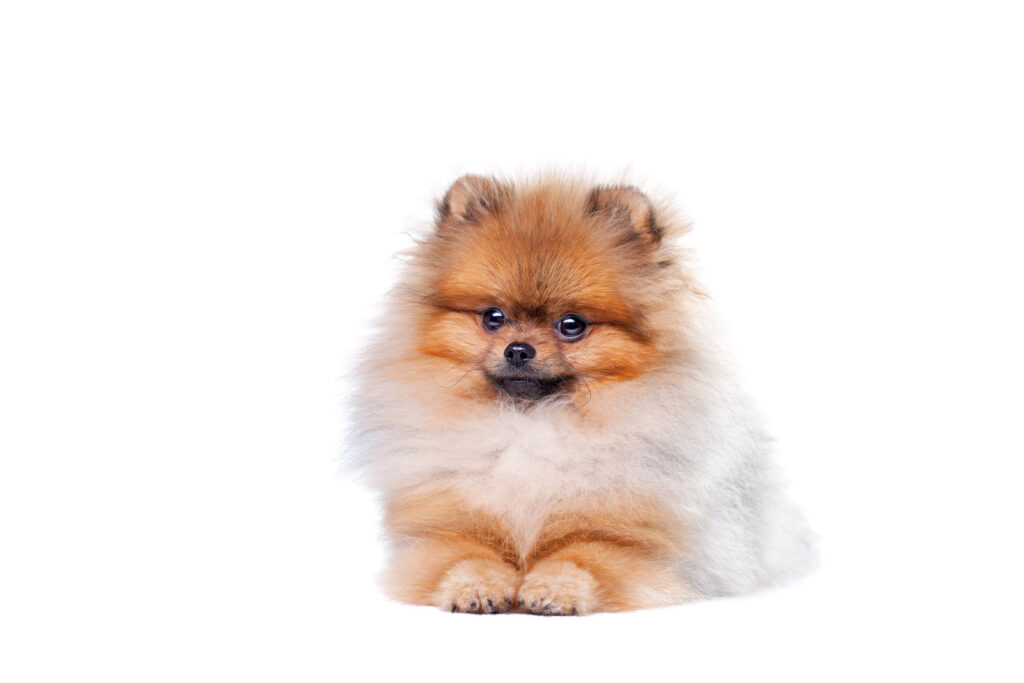
The Pomeranian is a small, compact, and spunky breed of dog, descended from the larger Spitz breeds of Northern Europe. The Pomeranian has a luxurious double-coat with long, straight guard hairs and a dense undercoat that comes in many colors including white, black, cream, orange, red, blue and sable.
They have an alert and inquisitive expression with dark eyes and a pointed muzzle. These dogs are very intelligent and eager to please their owners. They are also outgoing and friendly towards other animals. Pomeranians are one of the most trainable breeds due to their intelligence, as well as their eagerness to please. When trained properly, they can be excellent watchdogs due to their alertness.
The Pomeranian is a great family dog breed. They are small, affectionate, and energetic. They have a friendly personality and get along well with children and other pets. Pomeranians are loyal, intelligent, and very trainable, making them ideal companions for families.
Pomeranians are generally friendly and sociable dogs when it comes to humans and other animals. They are usually happy to meet strangers, although sometimes they can be a bit timid or shy.
With other dogs, Pomeranians tend to get along very well, although their small size can sometimes make them vulnerable to larger breeds.
The Pomeranian is an active and energetic dog breed. They love to play, and they have a lot of energy stored up inside them that needs to be released.
They are great for people who like to take their dogs out for walks or jogs, as they will happily keep up with you. Mastiffs are distinguished-looking dogs with long coats, beautiful colors, and magnificent tails.
The Pomeranian is a small but playful and loyal breed of dog. They are intelligent, alert, and energetic with a spunky personality. Pomeranians are very devoted to their owners and form strong bonds with them.
They make great watchdogs since they will bark when someone unfamiliar approaches.
Things To Keep In Mind
Health
The Pomeranian is a small dog breed that is known for its fluffy coat and friendly personality. This breed typically weighs between 3 and 7 pounds, making them one of the smallest breeds around. Despite their small size, they are quite active and need regular exercise to stay healthy.
They also require frequent brushing to keep their long coats in good condition. In terms of overall health, the Pomeranian can sometimes suffer from luxating patella and progressive retinal atrophy, which can lead to blindness if left untreated. Additionally, this breed can be prone to dental problems, so regular teeth cleaning and check-ups with the vet are important for keeping their mouths healthy.
Grooming
Grooming a Pomeranian dog is something that should be done regularly to keep its fur looking its best. It requires brushing daily to keep the coat free of tangles and mats, as well as regular bathing with a mild shampoo to remove any dirt or debris. The coat should also be trimmed every few months, and the nails should be clipped regularly.
Additionally, the eyes, ears, and teeth need to be cleaned and checked for any issues. Properly grooming your Pomeranian will not only help keep their coat healthy, but it will also help prevent problems such as skin infections and parasites. Taking care of their grooming needs is an important part of owning a Pomeranian.
Exercise
A fully mature Pomeranian often only needs 30 minutes of exercise each day, split between morning and evening walks; with much younger or older dogs, this is probably a little lower.
Always heed the precise workout recommendations of your veterinarian because going beyond might put stress on your buddy’s joints and bones.
Training
While Pomeranians are as adorable and cuddly as any dog, they need the right training to grow up to be well-behaved puppies. Despite the fact that your dog could already have a personality or traits from a prior owner, all dogs can be trained with patience, socialization, and lots of love. Your Pomeranian can develop into an obedient, lovable member of your family with time and effort.
Most people like to start their obedience training with house training. Some people ask if eight weeks is too early to begin potty training their Pomeranian because of their size, but this is a myth. You should start teaching your dog as soon as you bring him or her home to prevent the development of negative habits.
Training a Pomeranian is similar to training any other dog, however because of their small size, many owners prefer to learn them to go outside as well as inside on a pee pad or litter box. This kind of training is feasible, but you should be aware that it will probably take longer because your dog will take longer to figure out exactly where he should relieve himself.
Nutrition
The National Research Council of the National Academies advises an active adult Pomeranian weighing 10 pounds to consume an average of 300 to 400 calories per day.
Dogs who have undergone spaying or neutering or who are elderly can require less calories. Depending on their amount of exercise and unique metabolism, some dogs may require more calories.
For instance, growing puppies and young adult dogs both consume more calories than adult dogs do. For instance, a young adult Pomeranian dog weighing about 10 pounds who exercises frequently would require roughly 436 calories per day.
However, he would require fewer calories if your Pomeranian prefers to lounge about the home all day with no opportunity for activity. While 10 pound Pom that’s inactive required about 96 calories per day.
4. Maltese
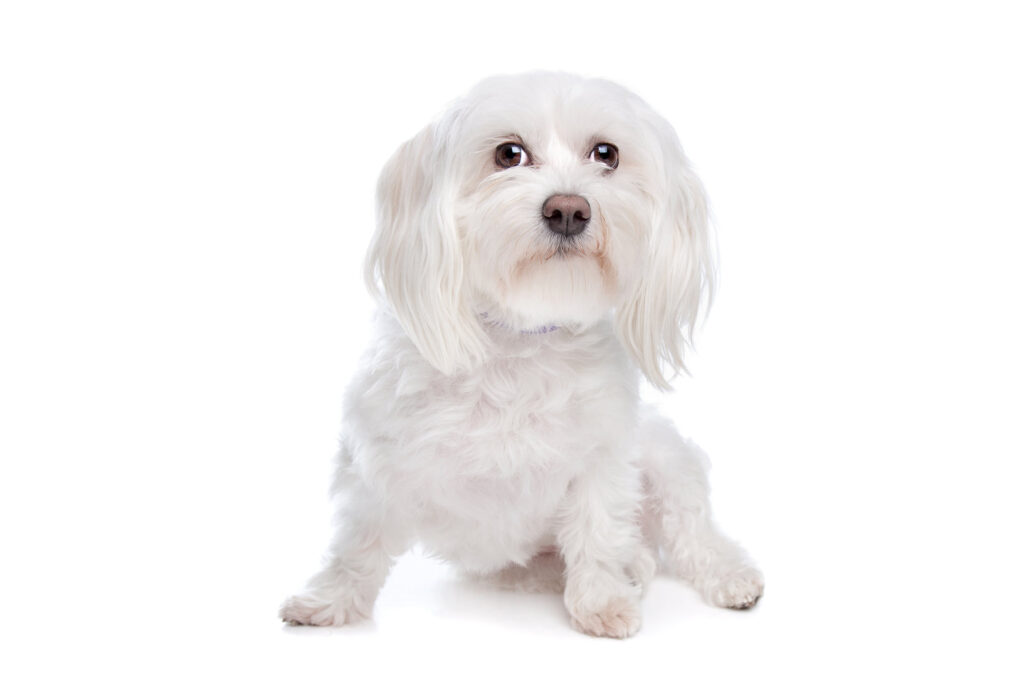
The Maltese dog breed is one of the smallest dog breeds which has been around for many centuries. It is believed to have originated from the island of Malta, hence its name. They are loyal and loving companions, devoted to their owners, and make great family pets.
Maltese dogs typically have long white coats that require daily brushing and occasional trimming. They are considered to be a toy breed and generally don’t grow more than 10 inches tall at the shoulder.
They also have dark, expressive eyes that add to their charm. Maltese dogs may bark a bit if they feel threatened but are usually quiet otherwise. It is important to note that this dog breed is hypoallergenic and does not shed often.
All in all, this breed is an excellent companion for those who want an affectionate pet without too much work or upkeep!
They are a loving breed that loves to be around company, especially their family. They tend to get really connected with their owners and look for all the attention out there.
The Maltese are dogs who want to play and meet new people, even though they might bark at them, that’s usually as a for of looking for attention and sign that they want to play if they are moving with their cute furry tail.
This dog breed wants to walk fast, run, play and everything about being outside.
The Maltese is a kind, loving, perceptive, responsive, and trustworthy dog. Maltese are energetic, playful, and active dogs who make excellent family pets. They also like picking up new tricks.
Things To Keep In Mind
Health
The Maltese is a small, friendly dog breed known for its long, silky white coat and its playful personality. They are an intelligent breed that can learn quickly, making them great companions. They have a lifespan of 12-15 years and can weigh anywhere between 3-7 pounds depending on their size. Generally speaking, the Maltese is quite healthy and has little to no genetic disorders or health problems associated with it.
However, they can be prone to patellar luxation (kneecap dislocation), cataracts, and dental issues such as tartar buildup. Proper nutrition, regular exercise and veterinary checkups should help keep your Maltese in top form so they can enjoy their life as a happy pup!
Grooming
The Maltese dog breed requires proper grooming to maintain their unique beauty and health. They have a long, silky white coat which must be brushed daily to keep it free from tangles and mats. Bathing should be done every one to two weeks with a mild shampoo designed for dogs. Trimming of the fur around the eyes, ears, and feet is also important in order to prevent debris build-up and potential infections.
In addition, their nails should be clipped regularly to prevent them from growing too long and uncomfortable. Overall, regular grooming of the Maltese dog breed is essential in order for them to look their best and live a healthy life!
Exercise
Maltese are playful dogs who are vivacious despite being a toy breed. You should walk your Maltese for roughly 30 minutes each day to give them a chance to burn off all their energy and maintain a healthy lifestyle.
Take them to a safe location with lots of interesting things to see and smell so they can run around unrestrained and remain happy and healthy.
Training
The Maltese is a little, obedient dog that is bright and adapts well to training and learning new things. Toilet training may take longer than with other breeds, but with persistence and patience, they will learn.
The gregarious breed of Maltese takes pleasure in interacting with people and playing with other dogs. They will gain from early socialization and participation in puppy socialization sessions.
The Maltese will begin to approach new experiences with caution when they are around 12 weeks old, as is the case with all breeds. Therefore, it’s crucial for their development that they encounter as many diverse circumstances as they can.
Introduce your Maltese to other dogs, people, and livestock as well as car travel and strange noises, like traffic, while they are still so young and responsive.
Maltese are loving dogs who enjoy human contact and cuddling, yet they might be prone to separation anxiety. Leaving them alone for brief amounts of time throughout training is an excellent practice to help them become acclimated to being on their own.
Nutrition
A healthy diet full of vitamins, minerals, and other nutrients is necessary for your Maltese. In order to make sure they are receiving the proper quantity of vitamins and nutrients, it is essential to offer them complete dog food that has been especially prepared for little breeds.
Growing puppies can prefer three or four smaller servings throughout the day instead of two larger meals. As your dog gets older, you can cut this down to two meals each day.
When choosing food for your Maltese, make sure to avoid foods with carotene since they coat tends to get colored as a result of carotene intake.
The suggested serving amount will vary depending on your dog. You must consider their age, metabolism, and amount of activity. Make sure your Maltese has a healthy, balanced diet and gets plenty of exercise to prevent weight gain.
Have a discussion about your dog’s food with your neighborhood vet or the breeder you’re buying your puppy from.
Owners Also Ask
What is the very smallest dog breed?
Chihuahuas are one of the tiniest canine breeds. The Chihuahua is frequently referred to as the world’s tiniest dog breed.
Are small dogs easier to care for than larger dogs?
Not necessarily. While small dogs may require less space and food, they can still require a lot of attention and care. It’s important to research the specific needs of any breed before bringing a dog into your home, regardless of size.
Do small dogs live longer than large dogs?
On average, small dogs tend to live longer than large dogs. This is because small dogs generally have a slower metabolism and experience less wear and tear on their bodies, which can lead to a longer lifespan.
However, there are many factors that can affect a dog’s lifespan, including genetics, breed, and lifestyle, so it’s not a guarantee.
Do small dogs make good pets for families with children?
Small dogs can make good pets for families with children, as long as the dog is well-socialized and the children are taught to treat the dog with kindness and respect.
However, it’s important to consider the individual needs and temperament of the specific dog, as some small breeds may be more delicate or sensitive than others. It’s also important to supervise any interactions between children and dogs to ensure the safety of both.
Big Wrap-up for the Smallest Dog Breeds
In conclusion, the smallest dog breeds are a great choice for those looking for a small companion. They are typically easy to care for and offer lots of love and affection. They come in many different shapes, sizes, and colors, so there’s surely one that’ll fit your lifestyle. These tiny canines require minimal exercise and space requirements so they don’t have to take up too much room in your home.
However, they do require plenty of socialization, training, and attention to ensure they grow up into well-rounded pets. If you’re looking for a loyal companion who won’t take up too much space then the smallest dog breeds might be perfect for you!
If you’re looking for more dog breeds and information about dog breeds, check out our main page.
Here are some specific dog breeds, just for you:

